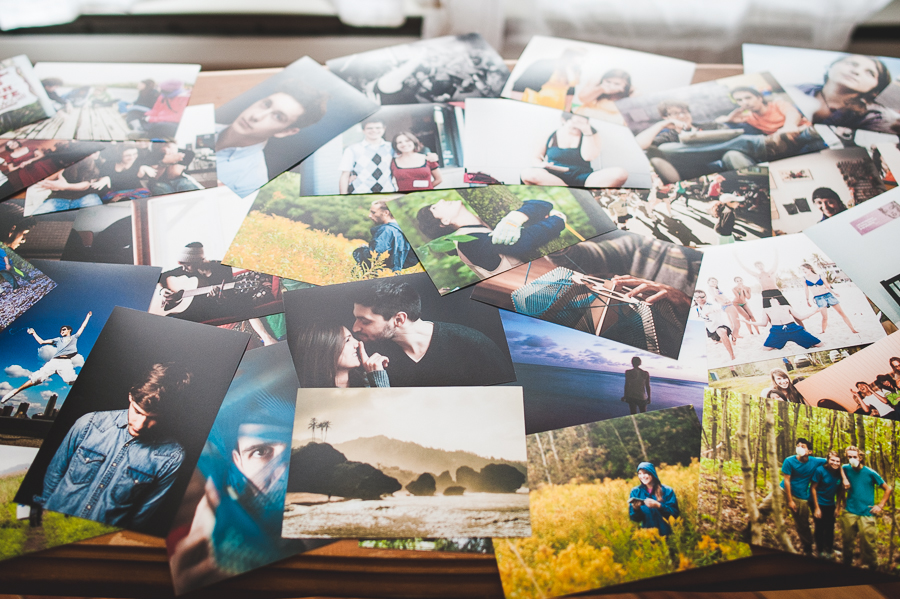Typically, for most photographers, graphic designers, and artists, what gets us in the game in the first place is an interest in the craft itself. With our very first clients, we’re ecstatic that we get to be paid for what we love to do, but many of us quickly realize that we don’t always have the same freedom in our craft when it comes to freelance work. For example, time or budget constraints may be imposed on our work, or there could be differences in vision between us and our clients. Over time, working to serve others exclusively can become draining, and in the worst case scenario, it can lead to a complete burnout, where the artist loses control and even starts hating her own work.
I have three strategies that I use to avoid burnouts.
1. Find something other than the passion in your craft to keep you going
Your “passion for the craft” got you in the game in the first place, but what will keep you motivated? A lot of photographers say that they’re “passionate about photography”. That’s great, but it wouldn’t be enough for me in the long run. There needs to be something deeper.
Take my portrait photography for example. I realized that each person who comes to me for headshots and portraits has something in common. Whether the headshot is to be used to promote a new book, to be displayed on their very first website promoting their art, or to be used for a big audition, each person who contacts me is about to embark on a new exciting project. I'll absolutely relate to their stories on how they got into their respective crafts and started their businesses, since I was there not that long ago when I made the jump from biology to photography. They’re about to put something out into the world for the first time that they’ve been working hard on, and I’m just there to help with my photography. What drives me for these portrait assignments is not a passion for photography. It’s my interest in my clients and their projects, and my ability to help them and propel them forward in what they love to do. Photography is just how I do it, it’s just a tool. If I lost an arm and the ability to take portraits, I’d still want to serve the same people, just via another medium like web or graphic design. I’m passionate about photography, yes, but there’s something beyond that passion that keeps me going.
2. Be selective with the type of work that you do and the people that you work with
In my very first year as a photographer, I would do all kinds of assignments that weren’t congruent with why I’m a photographer or who I want to work with. Wanna hear a few examples? I took hundreds of photos of Converse shoes while doing product photography for a clothing company. I stood in the smelly perfume section all day at The Bay in a Dior stand and photographed people after they got their make up done. I took photos of sushi. I was all over the place, taking photos of random things I wasn’t inspired by. (I do love eating sushi though.)
Now, if I’m not excited or inspired to be working with someone on a project, then I believe that there’s someone else who is a better fit than I am, and I say so to the client. I only want to produce my best work possible and I know that only working with the people I’m meant to be working will allow me to do so. And if you manage to fill your calendar only with assignments that you’re excited to work on, you’re more likely going to avoid burnouts.
3. Create your own personal projects
When I say personal project, I’m talking about projects that you create for yourself rather than for clients. If you’re a freelancer on the verge of burning out, personal projects can help you take back the freedom over your craft that you’ve been longing for without any limitations on your vision, and without stressful deadlines. By doing personal projects, you go back in time to when you just got started in your craft, when you had full control on the pieces that you created. (If you're interested in my upcoming personal project about fluffy wool sweaters and the people wearing them, click here to read more about it.)
You can (and in most cases should) display these projects on your website and share them. This shows prospective clients the type of work that you want to do / can do. We’re typically hired for the work that we show. And by being selective and thoughtful about the personal projects that we do and display, we’re more and more likely to get clients who hire us for that kind of work. And when we fill our schedule with the assignments that inspire us the most, we’re much less likely to burnout. Personal projects are useful for other reasons as well:
- If you suspect some downtime ahead, where fewer assignments will be coming in, personal projects can help keep those creative muscles active so that when a rush of requests comes in, you’re not rusty.
- You get to explore new techniques in low-pressure situations. If I buy a new lighting modifier, I’m not going to try it out for the first time on a client. I don’t want to jeopardize an assignment. I’ll either practice it on my own or use it in low-pressure personal projects.
- It’s an opportunity to work with potential collaborators you’ve been wanting to work with.
- You can use personal projects for charity, or to help organizations and people who would otherwise not have the means to hire people in your line of work.
Hope this was useful. If you’ve enjoyed reading this and would like reading more, the best way to follow me is to Like my Facebook page, where I’ll be posting my own work and sharing recent blog posts.


